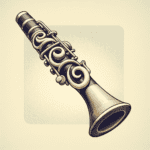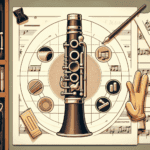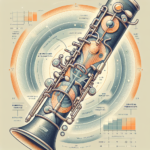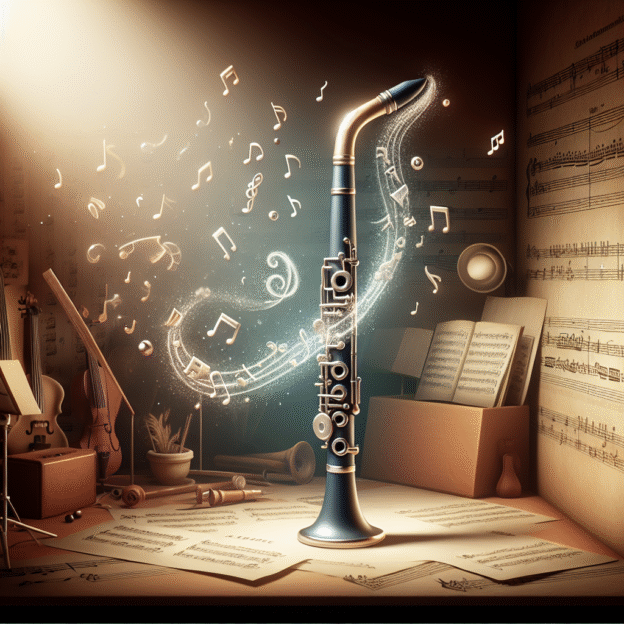The Magic of Clarinet Mouthpiece Facing Curves
When you pick up a clarinet and start playing, do you ever stop to wonder what's really shaping that beautiful sound? You'd be surprised how much magic lies in your mouthpiece, particularly in the facing curve. The idea of clarinet mouthpiece facing curve analysis might sound a bit technical, but trust me, understanding it can truly elevate your playing experience.
So, let's start with the basics. A facing curve refers to the shape and length of the part of the mouthpiece that makes contact with the reed. Sounds pretty straightforward, right? Well, this curve is anything but simple. Its design affects how your air meets the reed and therefore has a massive impact on your tone, response, and articulation. Everything from jazz solos to classical performances demands a specific type of response, and the facing curve plays a starring role in that whole dynamic.
Why the Facing Curve Matters
For those just beginning their clarinet journey, you might wonder, “Why does this little curve matter so much?” Believe me, it makes all the difference. A smaller curve might require a firmer embouchure to produce notes, while a longer one gives more flexibility for dynamics but can demand more control. Think of it like this: choosing the wrong facing curve is like wearing sneakers to a formal ballroom. You can probably make it work, but you definitely won't get the best results.
| Curve Type | Characteristics | Best For |
|---|---|---|
| Short Curve | Requires firmer embouchure, less flexible | Beginners, controlled playing |
| Long Curve | More flexible, requires more control | Experienced players, dynamic performances |
| Medium Curve | Balanced flexibility and control | Versatile, suitable for most players |
Experienced players often get excited about the subtle differences between facing curves. Some even compare it to wine tasting—nuances in facing curves can bring out richness or brightness in your tone. Martin Freres Clarinets, known for their craftsmanship, have a legacy tied closely to understanding such intricacies. Many seasoned clarinetists swear by expert-crafted mouthpieces for their ability to hit just the right balance in sound output and comfort.
Analyzing Facing Curves
Now, how do you go about analyzing facing curves? Some professional clarinetists use tools like glass plates and feeler gauges to measure the precise angle and length of the curve, but let's be honest—not everyone owns those tools. If you're more casual about your analysis, try experimenting with different reeds and see how they feel against your current mouthpiece. A flexible reed might feel stifled or too free depending on your curve.
On top of that, looking at how the mouthpiece interacts with airflow is important. Are high notes getting pinched? Does the sound break up during crescendos? Those can be signs your curve isn't a good match for your playing style. Even something as minor as your embouchure shape can interact uniquely with a certain mouthpiece, so there's rarely a one-size-fits-all answer. This is why even professional brands like Martin Freres focus on variety. Players with different skills and needs require unique setups to achieve their ideal sound.
Tips for Beginners
For beginners, I suggest sticking with a mouthpiece that offers a moderate facing curve. It balances accessibility and performance. Remember, your reed choice will also influence how that curve behaves. A stiff reed paired with a highly arched curve might leave you gasping for smooth airflow, while a softer reed can feel wonderfully responsive but might sacrifice power. It's surprising how these tiny adjustments make such a big impact.
For Advanced Players
If you're an advanced player exploring clarinet mouthpiece facing curve analysis, don't hesitate to try different custom mouthpieces. Work with a well-equipped technician or even collaborate with fellow musicians to evaluate sound variations. You'll find that matching a mouthpiece to your playing style creates a feeling as satisfying as hitting the perfect note during a solo. There's just no substitute for that ‘aha!' moment when everything clicks.
“Finding the right mouthpiece facing curve is like discovering a hidden superpower for your clarinet playing. It can transform your sound and make playing feel effortless.”
One of my favorite moments was when a student of mine transitioned from struggling with a generic mouthpiece to one more suited for their jazz focus. Seeing their eyes light up as they realized the difference in sound projection and ease of high notes reminded me why these technical details matter.
Mouthpiece Maintenance
Caring for your mouthpiece is another puzzle piece in maintaining your dream tone. Regular cleaning to remove residue from reeds and saliva buildup ensures nothing interferes with the precise design of the facing curve. I've seen too many players blame their sound troubles on technique when a simple cleaning session would've solved it.
Conclusion
Clarinet mouthpiece facing curve analysis is a bit like getting to know yourself musically. It's not an overnight process, and there's always more to learn. Start small by observing how different curves affect your tone and try to listen critically. Whether you're performing in an orchestra or just jamming at home, the right curve can transform your playing experience into something truly enjoyable.
Remember, the relationship between you, your mouthpiece, and your reed is a partnership. By understanding the facing curve, you're not just setting yourself up for better playing—you're giving yourself every opportunity to build the sound you've always dreamed of achieving.







